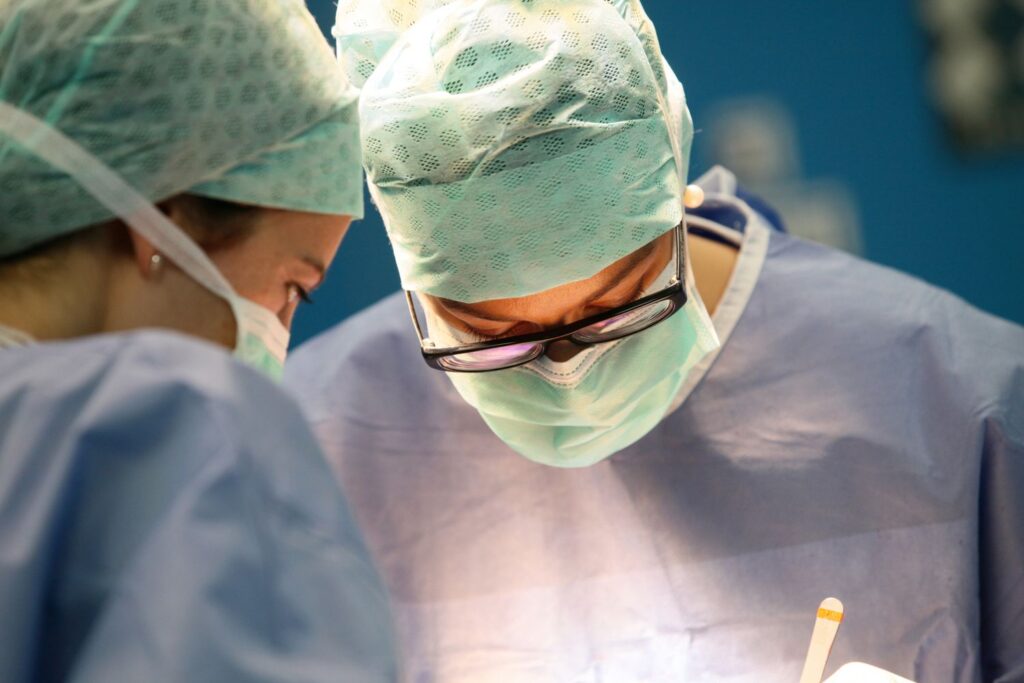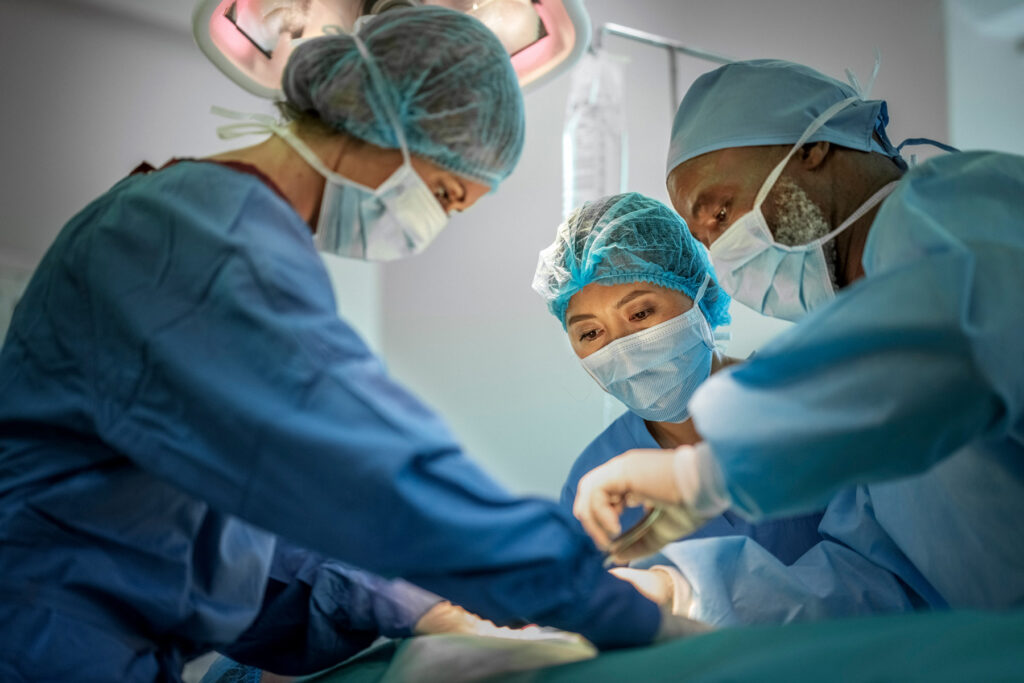Having an injury that causes pain or affects the mobility of joints? An orthopedic surgeon can help diagnose, treat, and rehabilitate the injury to relieve pain and enhance function of the joints. Although some injuries will require orthopedic surgery, minor injuries may only require a change of lifestyle, physical therapy, and medications.
When performed right, orthopedic surgery offers several benefits. However, the National Institute of Health estimates that the risk of complications after orthopedic surgery is about 12%. This article explores the advantages and risks associated with orthopedic surgery.
4 Benefits of Orthopedic Surgery

There are several types of orthopedic surgery, from arthroscopy, bone fracture repair, tissue repair surgery, corrective surgery, and arthroplasty. The more modern methods are minimally invasive, making them ideal for faster patient recovery.
When therapy will not reduce pain and improve joint function, orthopedic surgery comes in handy. It offers the following benefits:
- Eliminate Pain – Pain in the musculoskeletal system may arise from injuries, such as ligament tear and fractures, or health conditions, such as arthritis. The pain can be debilitating and may limit the range of motion. Orthopedic surgery can eliminate the pain and restore the functionality of the joints to enable the patients to continue with their normal life.
- Restoration of Joint Functionality – When a joint is injured, it swells and becomes stiff, limiting movement. These injuries might result from an accidental fall or car crash, from a high level of sporting activities, or from being overweight. The swelling of the joints occur when the bursa, a sac filled with lubricating fluid, gets inflamed, causing a condition known as Bursitis. During orthopedic surgery, the surgeon can remove the excess fluid to relieve the patient. If the bursa sustains severe damages, the surgeon may decide to remove it to reduce the swelling, and consequently restore function.
- Enhance Sports and Exercise Performance – Orthopedic surgery treats inflammation of joints, bone, ligaments, and tendons injuries to improve the motion of joints and reduce pain. For people in sports and those who engage in strenuous workout, less pain and improved range of motion mean better performance.
- Reduce Dependence on Medication – If swelling and pain fail to get better with medication and physiotherapy, orthopedic surgery can help offer almost instant relief. Other forms of correction might take longer, increasing dependence on medication and physical therapy. Even better, the patient can be more free and comfortable to carry on their day-to-day activities. One can enjoy the freedom of walking without crutches, canes, and walkers through orthopedic surgery.
The Risks of Orthopedic Surgery

There are risks associated with every surgical procedure. In instances where there are associated diseases, the risks are even higher. Complications following orthopedic surgery might show immediately after the procedure or later in life. Some of the complications expected after the surgery include:
- Blood Effusion – This occurs when blood seeps into the operated joint, haemarthrosis. The condition may be minor and relieved by applying ice in the joint or it might require aspiration or a second procedure. An orthopedic surgeon can reduce the risk of blood effusion through vascular coagulation and ensuring there are drains for the blood when closing the wound.
- Wound Infection – Wound infection is not common. However, when it happens, it requires a second procedure to remove the joint and sometimes change the implant. The patient might also need to take antibiotics for a long time. Infection might occur when the operating site is not hygienic or later from germs transported by the blood.
- Dislocation – If the muscles that hold a joint are too weak, dislocation might occur if a joint is moved a few days after the procedure. This complication is common in hip replacement procedures. Patients can avoid the risk of dislocation by restricting movement of the operated joint for at least three months. Physiotherapists will also teach patients the necessary techniques to help them recover with the risk of further injuries.
- Venous Thrombosis – A clot in the vein can occur when a patient is immobilized. In severe cases, the clot might detach to and move to the lungs, causing pulmonary embolism. Today, with better physiotherapy, the risks of Venous Thrombosis are low.
- Bone Fracture – Although this is a rare complication, it might occur when the patient has fragile bones. Bone fracture happens during the placement of the implant, making the procedure more complicated.
- Nerve Complications – If the nerves close to the operated joint are severed during the implantation procedure, the patient might suffer from neuroparalysis. The paralysis will heal with time, but this might take several months.
Several months or years after the surgery, more complications might arise. These include wear that causes the implant to loosen, late infection, stiffening of joints due to periprosthetic bone formation, chronic effusion, and complex regional pain syndrome.
Are There Alternatives to Orthopedic Surgery?
Orthopedic surgery is only necessary when non-surgical treatments do not relieve pain, ease movement, and reduce swelling, or the patient wants fast results from an injury. Orthopedics can administer other forms of treatment depending on the nature of the injury. These include:
- Joint Immobilization – Immobilization helps the injured joint to heal. Doctors can use casts, boots, and braces. When a joint is immobilized, swelling, pain, and muscle spasms resulting from an injury can be mitigated. This is common in management of an ankle sprain.
- Injection – Injections can reduce pain and inflammation in joints. There are different injections for different scenarios. For instance, corticosteroid injections are for pain and inflammation, especially for shoulder bursitis.
- Physical Therapy – With physical therapy, patients can reduce pain and inflation and restore the function of joints. Physiotherapists offer exercises that target various functions from strength, balance, coordination, flexibility, and range of motion.
- Medication – Most medications are for temporary pain relief. Doctors might prescribe pain relievers, such as Ibuprofen, or they might recommend muscle relaxants and oral steroids.
- Lifestyle Changes – Changes in daily routines make it easier for joints to heal. One of the changes that a patient can make is being mindful of their posture. Poor posture, whether standing or sitting, can make joint conditions worse.
When Does Orthopedic Surgery Become Necessary?

People who have had multiple injuries, severe injuries, and people looking for fast relief from pain find orthopedic surgery a better option. Bill Walton, the NBA star, had a knee replacement in 2013. This was after undergoing 37 other orthopedic procedures before that. He had procedures on his ankles, feet, and spine. Athletes are at risk of getting injuries. Based on the extent of the injury, the orthopedic doctor can recommend a procedure. These procedures ensure they recover fast enough to get back to action or are not in pain when they take on their next match.
Conclusion

Orthopedic surgery is necessary when non-surgical means of alleviating musculoskeletal injuries are ineffective. They help in eliminating pain, restoring function, and making the patients independent. However, complications, such as blood effusion, bone fracture, and others might arise. Continued research and improvements in technology have made it easier for orthopedic surgeons to use non-invasive treatments for joint injuries.

